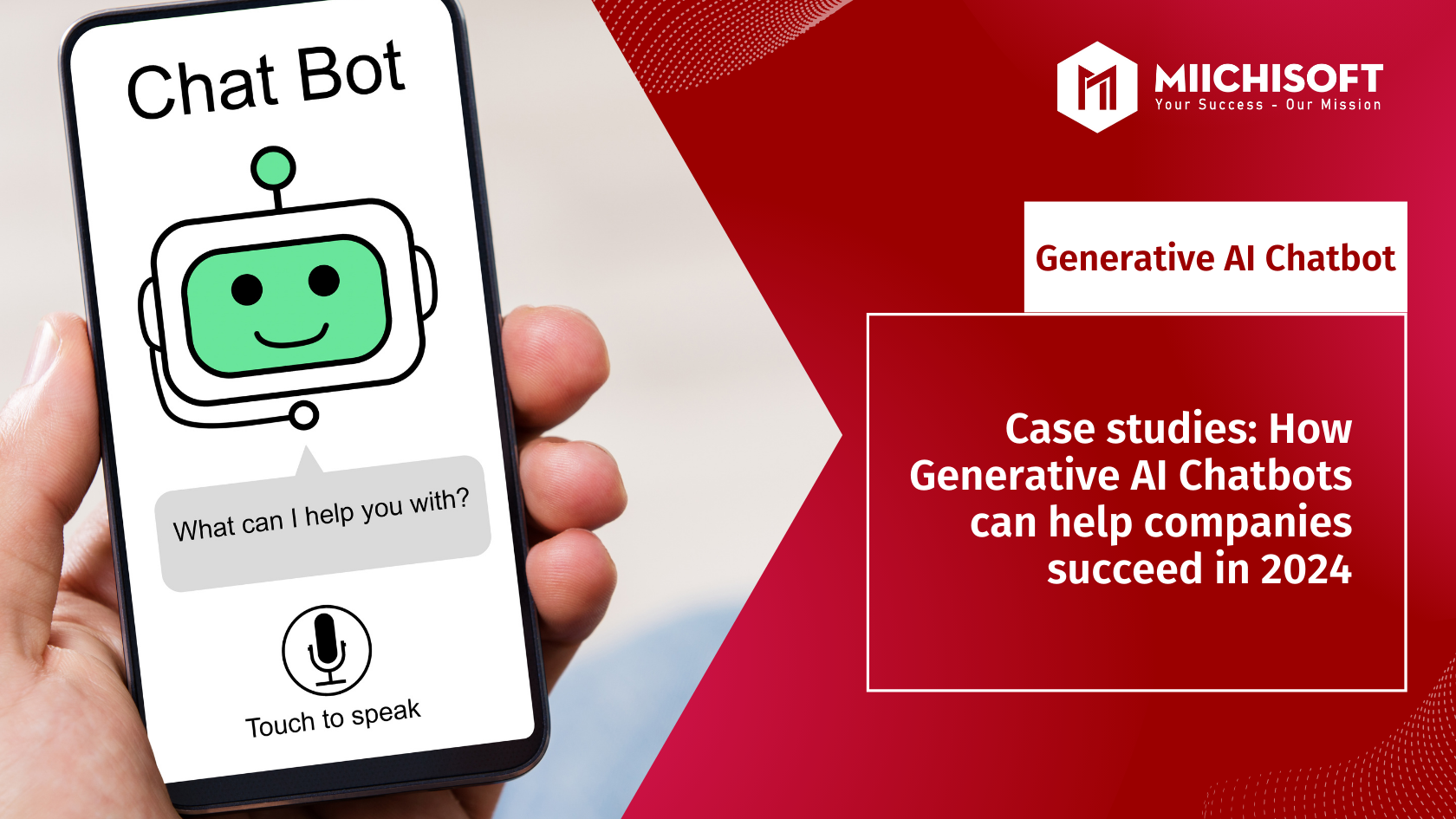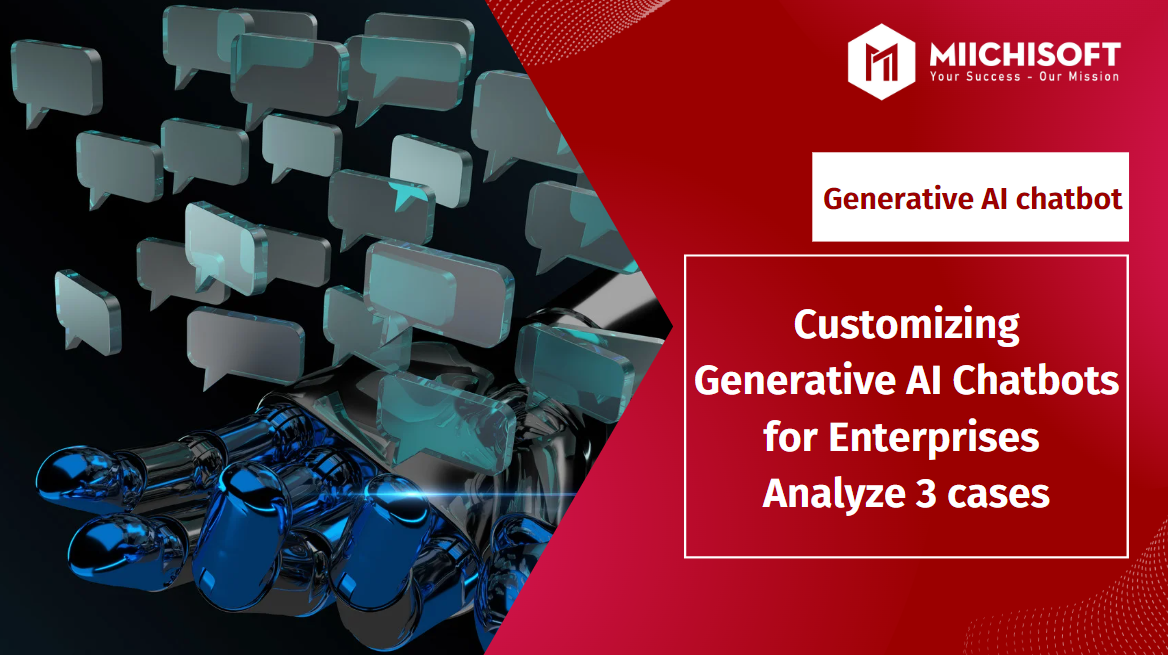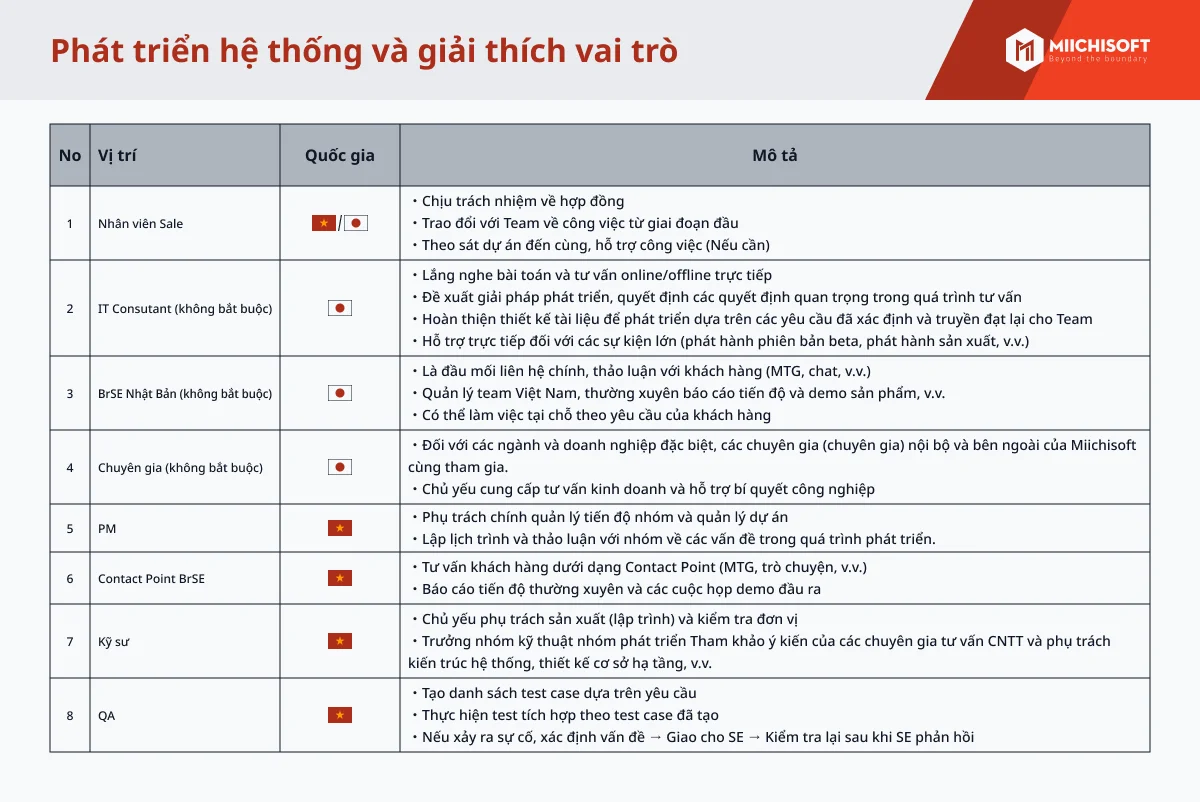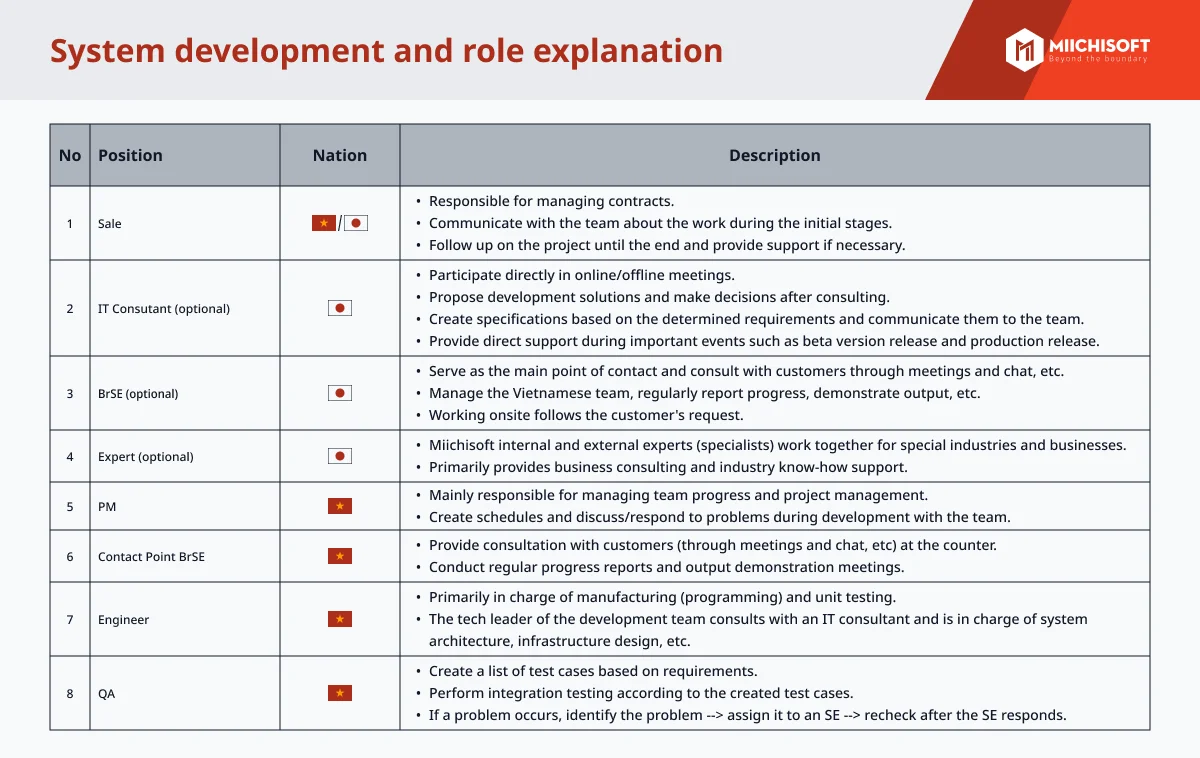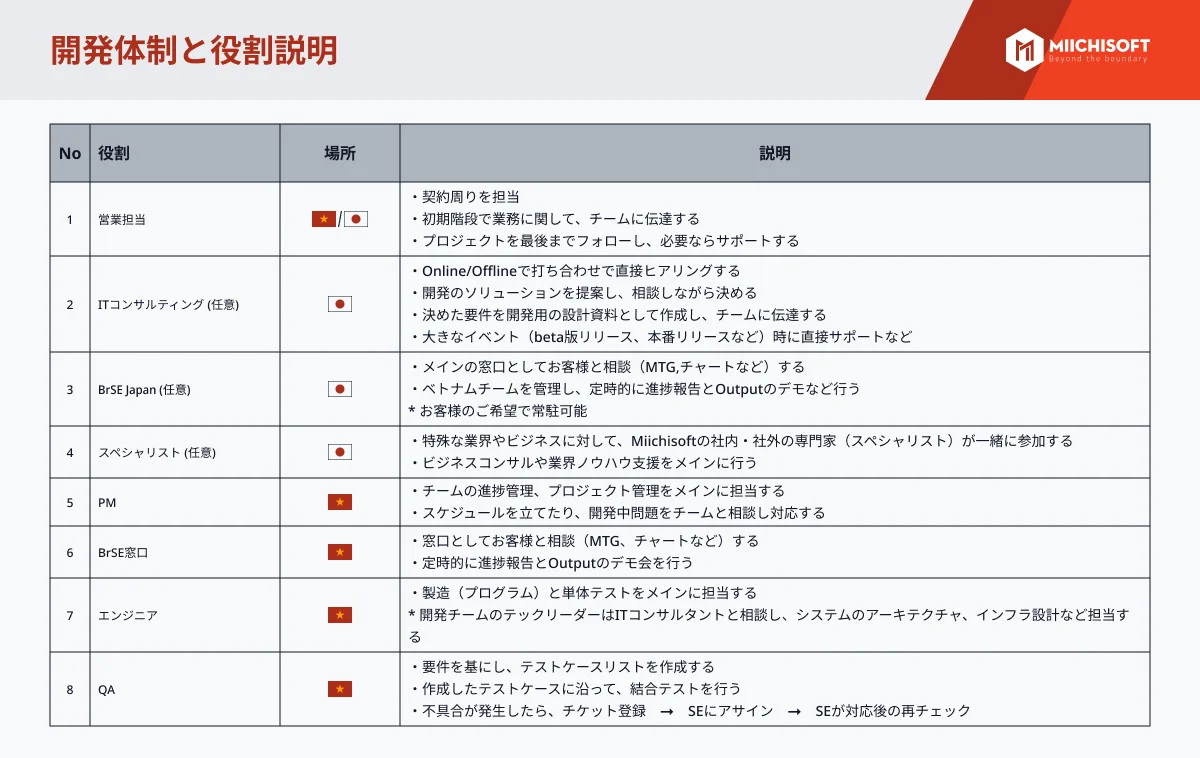According to IDC, by 2026, global spending on digital transformation is projected to reach USD 3.4 trillion, reflecting the explosive demand for technology and the rising cost pressures on IT engineering teams. In this context, AI Low-code has emerged as a promising solution to help businesses optimize their technology budgets.
But the key question remains: Can business truly reduce IT staffing costs with AI low-code? This article explores the answer and highlights 4 important considerations before integrating AI Low-code into operations.
1. What is AI Low-code? How Can Bussiness Reduce IT Staffing Costs with AI low-code?
1.1 What is AI Low-code?
AI Low-code refers to platforms that combine artificial intelligence (AI) with simple, visual tools. Instead of writing complex code, users can build applications through drag-and-drop actions. With AI and machine learning, these platforms can handle data automatically, provide useful suggestions, and create smarter workflows.
Currently, many AI Low-code platforms such as n8n, Dify AI, or Make are widely adopted, allowing different departments to easily build software that optimizes various tasks, from internal information retrieval and content generation to planning. The most notable advantage of these platforms is their ability to design intelligent workflows, making operations more seamless while minimizing errors caused by manual processes. As a result, businesses see these platforms as a potential way to reduce IT staffing costs.
Learn more: Top 3 Workflow Automation Platforms: Is n8n, Dify AI, or Make the Right Fit for Your Business?
1.2 How Can Business Reduce IT Staffing Costs With AI low-code?
1.2.1 Accelerating Development Even with Small IT Teams
In software development, IT teams typically handle two types of work: repetitive tasks and complex custom tasks. Custom tasks add significant value to the system, such as designing features, optimizing performance, or addressing specific business processes. However, repetitive tasks like building basic modules, integrating APIs, or performing manual testing often consume 40–60% of project resources while contributing little value to the system.
Businesses can reduce IT staffing costs with AI low-code in several ways:
・Automating repetitive tasks: It can generate code for common modules, saving a lot of time on work that often takes up 40–60% of project resources.
・Faster integration: Instead of spending weeks building from scratch, teams can use ready-made templates.
・AI assistant for engineers: AI can suggest or complete pieces of code, allowing engineers to focus on the more important business logic.
・Shorter feedback cycle: The visual interface makes it easier for business and IT teams to work together, reducing delays caused by misunderstandings.
・Built-in testing and deployment tools: These tools help catch errors early and reduce mistakes from manual work.
With these advantages, companies can handle the same workload with smaller IT teams, saving costs while still speeding up development.
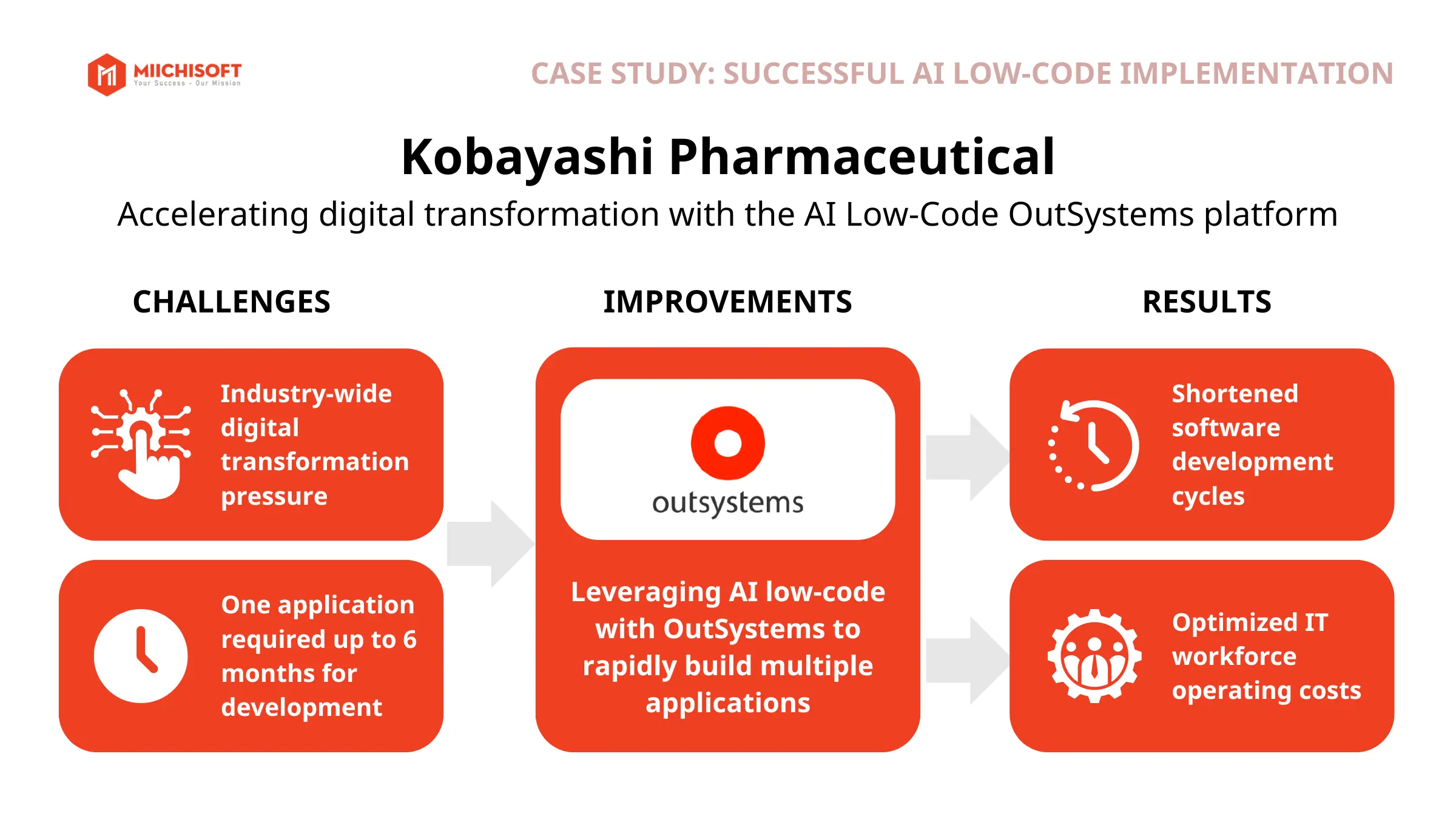
Kobayashi Pharmaceutical, a long-established pharmaceutical company in Japan, once faced major challenges in its digital transformation journey. In the past, software development was outsourced, and each new application took an average of six months to complete. This approach not only drove up costs but also slowed down the pace of digital transformation.
To meet the industry’s growing digital demands, Kobayashi decided to adopt the AI Low-code platform OutSystems. With drag-and-drop tools and pre-built modules, the time to launch new features was reduced from months to just a few days or weeks. This allowed the internal IT team to quickly modernize 400 web applications while focusing more resources on strategic R&D activities.
1.2.2 AI Low-code Helps Businesses Leverage Existing Teams and Streamline IT Operations
With AI Low-code, departments such as HR, Marketing, or Operations can directly design IT solutions to support their workflows, boosting productivity and improving cross-department collaboration. This not only reduces the burden on the internal IT team but also helps the company streamline the IT organization. As a result, core engineers can focus on projects that require deeper technical expertise.
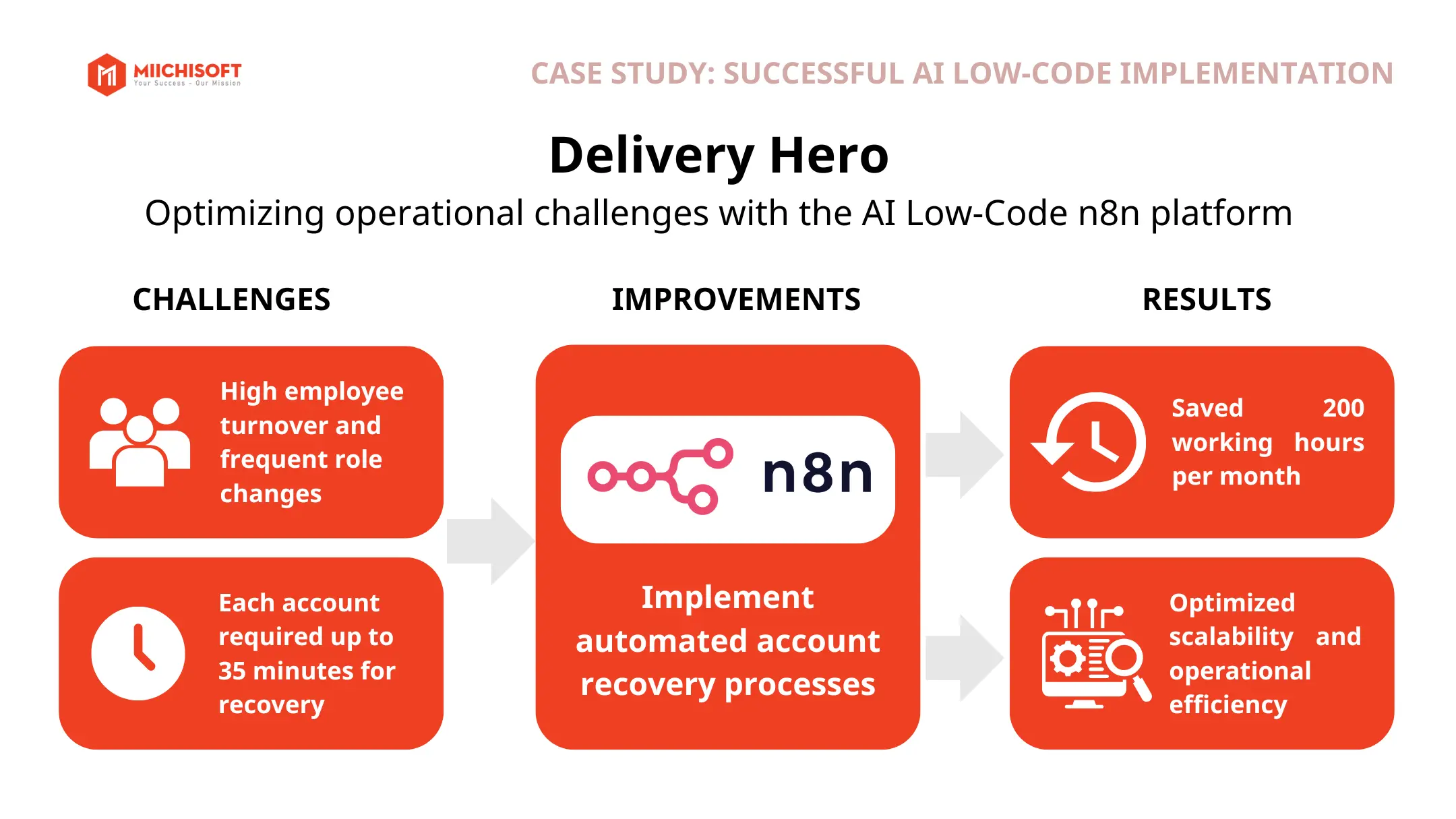
Delivery Hero, a food delivery group based in Germany, successfully addressed its challenges by adopting AI Low-code. In daily operations, employees frequently change roles, take leave, or leave the company, which requires system accounts to be locked, reactivated, or restored. Each restoration used to take the IT team around 35 minutes per account, involving manual steps across multiple systems. This created significant pressure and delayed support response times.
By implementing the AI Low-code platform n8n to create automated workflows that call APIs across systems such as Okta, Jira, and Google Workspace, the restoration process was reduced to just 20 minutes. This saved more than 200 working hours per month. As a result, Delivery Hero not only improved the employee experience with faster request handling but also optimized the size and efficiency of its IT team.
Learn more: Time Waste Is Silently Draining Your Business: 3 Smart Steps to Integrate AI into Business Workflow
2. So, Can AI Low-code Completely Eliminate IT Staffing Costs? 4 Things to Know Before Implementation
In fact, it is obvious that businesses can reduce IT staffing costs with AI low-code, accelerate application development, and streamline operations. However, it cannot fully replace IT hiring, as AI Low-code platforms are not designed to handle highly complex software development needs.
Here are 4 key considerations businesses should keep in mind before adopting AI Low-code:
2.1 Complex Projects Still Require a Professional Development Team
AI Low-code is highly effective for quickly building simple applications to test ideas, retrieve data, or streamline small departmental workflows. However, when it comes to developing core systems such as ERP, large-scale supply chain management, or enterprise-level e-commerce, the complexity usually goes beyond what these platforms can handle.
In such cases, businesses still need professional developers to:
・Design system architecture that matches business processes and operational scale. While AI Low-code can generate quick prototypes, enterprise systems require a solid foundation from data structures and user permissions to security measures. An IT team ensures the architecture fits current business workflows and can scale for future needs.
・Develop specialized functions not supported by AI Low-code. Many industry-specific features are not available out of the box, so businesses should carefully evaluate before relying solely on AI Low-code as a replacement for IT staff.
2.2 Security Concerns When Implementing AI Low-code
Most AI Low-code platforms today are offered as SaaS or cloud services. This means that business data passes through third-party infrastructure, raising concerns about information security especially as organizations (particularly in Japan) face increasing pressure to comply with regulations and protect sensitive data.
If a company aims to reduce IT staffing costs and invest in long-term AI Low-code adoption, it must understand how to secure the platform internally. This includes establishing a clear data governance framework, defining security procedures, and continuously monitoring the system. Without these measures, the benefits of cost savings and faster deployment could be significantly limited, and the organization may face additional risks from potential security breaches.
2.3 AI Low-code Cannot Fully Guarantee Software Stability
AI Low-code can speed up application development, but its capabilities are generally limited to basic functions. When deploying core systems such as ERP or CRM, businesses should not reduce IT staffing at the expense of maintaining software stability.
The table below illustrates the clear difference between AI Low-code and professional IT staff when it comes to operational stability:
| Criteria | AI Low-code | Experienced IT Staff |
| Code Review & Optimization | utomatically generates code quickly, but with limited control over redundant code. Performance may drop with large datasets. | Analyze, edit, and remove redundant code to ensure optimal performance. |
| Handling Complex System Integration | Supports basic connections via pre-built APIs, but limited for specialized integrations or core systems. | Design and manage complex integrations, ensuring data consistency, security, and uninterrupted operation. |
| Scalability & Maintenance | Limited to the platform’s scope; difficult to optimize when requirements change rapidly. | Build flexible architectures that are easy to scale and reduce long-term maintenance costs. |
2.4 The Risk of “Hidden Costs” When Scaling with AI Low-code
AI Low-code is often promoted as a cost-effective solution upfront. However, when used long-term, businesses may encounter hidden costs such as:
・License fees: Most low-code/AI platforms operate on a subscription model. As usage scales up, with more users or applications, license costs can increase significantly beyond initial estimates.
・System integration costs: If the platform is not fully compatible with core systems (ERP, CRM, core banking, etc.), additional investment in technical resources or middleware solutions may be required, leading to extra expenses.
・Maintenance and upgrade costs: Low-code platforms are often dependent on the vendor. Changes in features, policies, or upgraded versions may require additional payments to ensure continued stable operation.
・Migration costs: If the platform cannot meet long-term development needs, moving data and workflows to a new system can consume significant time and human resources.
From a management perspective, businesses can reduce IT staffing costs with AI Low-code in the short term, but the total cost of ownership over the long term is the real measure of its impact. Therefore, instead of focusing only on immediate savings, businesses should evaluate AI Low-code within the broader strategic context, considering costs, risks, and long-term scalability.
3. When to Hire IT Engineers vs. When to Use AI Low-code? What Should SMEs Choose?
AI Low-code cannot fully replace professional IT engineers. Therefore, businesses need to make flexible choices between the two in order to accelerate digital transformation while controlling investment costs.
Below is a concise table suggesting situations where each option may be more suitable:
| Business situation | Solution | Reason |
| Need to develop products quickly for testing | AI Low-code | Quickly bring ideas to life and reduce IT staffing costs in the short term. |
| Optimize internal efficiency with automated workflows | AI Low-code | Optimize internal efficiency with automated workflows |
| Long-term development of core systems | IT Engineers | Long-term development of core systems |
| IT projects with high security & compliance requirements | IT Engineers | Provides full control over architecture and data security. |
| Limited budget or shortage of IT staff | AI Low-code | Reduces short-term IT staffing costs while keeping the team lean. |
| Want to maintain control over technology | IT Engineers | Avoids dependency on a third-party platform. |
Additionally, to accelerate development while ensuring technical quality and security, businesses need an IT team skilled in AI. With AI support, software engineers can handle larger workloads without expanding headcount. This keeps the IT department lean, while allowing the company to continuously manage and measure team performance effectively.
4. Combined Solution – Miichisoft’s Core Labo AI+
Core Labo AI+ is Miichisoft’s model of AI-skilled IT personnel, built on two key components:
・Core Labo: Provides a team of highly skilled engineers to support businesses in the medium and long term.
・AI+: IT professionals proficient in advanced AI tools (such as Cursor, ChatGPT, etc.) to analyze requirements, design, and develop software.
With Core Labo AI+, businesses can leverage the cost and speed advantages of AI while ensuring quality, security, and long-term scalability through experienced engineers.
Miichisoft’s capabilities are backed by over 7 years of experience and 200+ successful projects in Japan, Singapore, Hong Kong, and Vietnam. We are always ready to support businesses in accelerating development while building sustainable and secure systems.
5. Conclusion
Obviously, businesses can reduce IT staffing costs with AI low-code. However, this does not mean it can fully replace software engineers or cut IT staffing costs in the long term. For complex, highly secure, and scalable systems, experienced engineers remain the most cost-effective choice over time.
Rather than choosing between “AI or IT,” a smarter strategy is to combine both. This is the value Miichisoft provides through Core Labo AI+, our AI-skilled IT personnel model. The solution allows businesses to leverage the speed and cost advantages of AI while ensuring quality, security, and long-term sustainability through professional engineers.
When AI and IT are combined effectively, they become a strategic lever to accelerate digital transformation, reduce IT staffing costs, and build sustainable systems for the future.
FAQ
Q1: Should Small Businesses Start with AI Low-code or Build Their Own IT Team?
A: For small businesses, AI Low-code is often a reasonable starting point, as it helps reduce IT staffing costs and quickly test ideas (MVPs, internal applications, etc.). However, the choice between AI Low-code and building an IT team depends not only on company size but also on project goals and complexity. If high customization, strict security, or integration with core systems is required, small businesses still need professional IT engineers or a combined solution to ensure quality and long-term scalability.
Q2: Does Reducing IT Staffing Costs with AI Low-code Affect Product Quality?
A: It can, if a business relies entirely on AI Low-code. While these platforms optimize speed and cost, experienced developers are still needed to review, optimize code, and ensure security. Combining both AI Low-code and skilled engineers allows companies to save costs while maintaining product quality.
Q3: How to Ensure Security for Solutions Built on AI Low-code Platforms?
A: Currently, most AI Low-code platforms apply multiple layers of security, such as storing data within the company’s environment, controlling access permissions, and complying with international standards (e.g., GDPR, ISO27001). This allows businesses to leverage the power of AI while keeping core systems secure.
At Miichisoft, security is further enhanced: data can be deployed directly on the client’s infrastructure (localized) and is never used to train external AI models. Additionally, the entire system complies with GDPR and ISO27001 standards, giving businesses confidence to use AI Low-code safely in both the short and long term.
Q4: Where Should Businesses Hire AI-Skilled IT Professionals?
A: Businesses can find AI talent through various channels such as GitHub, LinkedIn, AI developer communities, hackathons, or freelance platforms. However, screening candidates who are truly proficient with tools like GitHub Copilot, Tabnine, or Replit can be time-consuming.
An alternative is Miichisoft’s Core Labo AI+ model, where engineers are already experienced in practical AI applications and ready to contribute to projects from day one.
Q5: How Does Hiring AI-Savvy IT Engineers Save Costs Compared to a Traditional IT Team?
A: The main savings come from total project costs and medium- to long-term operational costs.
For example, in programming tasks:
・Traditional IT Engineers: Write code manually, spend more time on testing, and are prone to errors → higher staffing costs and increased costs for fixing mistakes.
・AI-Savvy Engineers: Leverage AI to suggest code, detect errors early, and automatically generate test cases → shorter timelines, reduced workload, and a leaner team.
As a result, projects are completed faster, IT staffing costs are lower in the long term, and additional savings are achieved in maintenance and operations.





